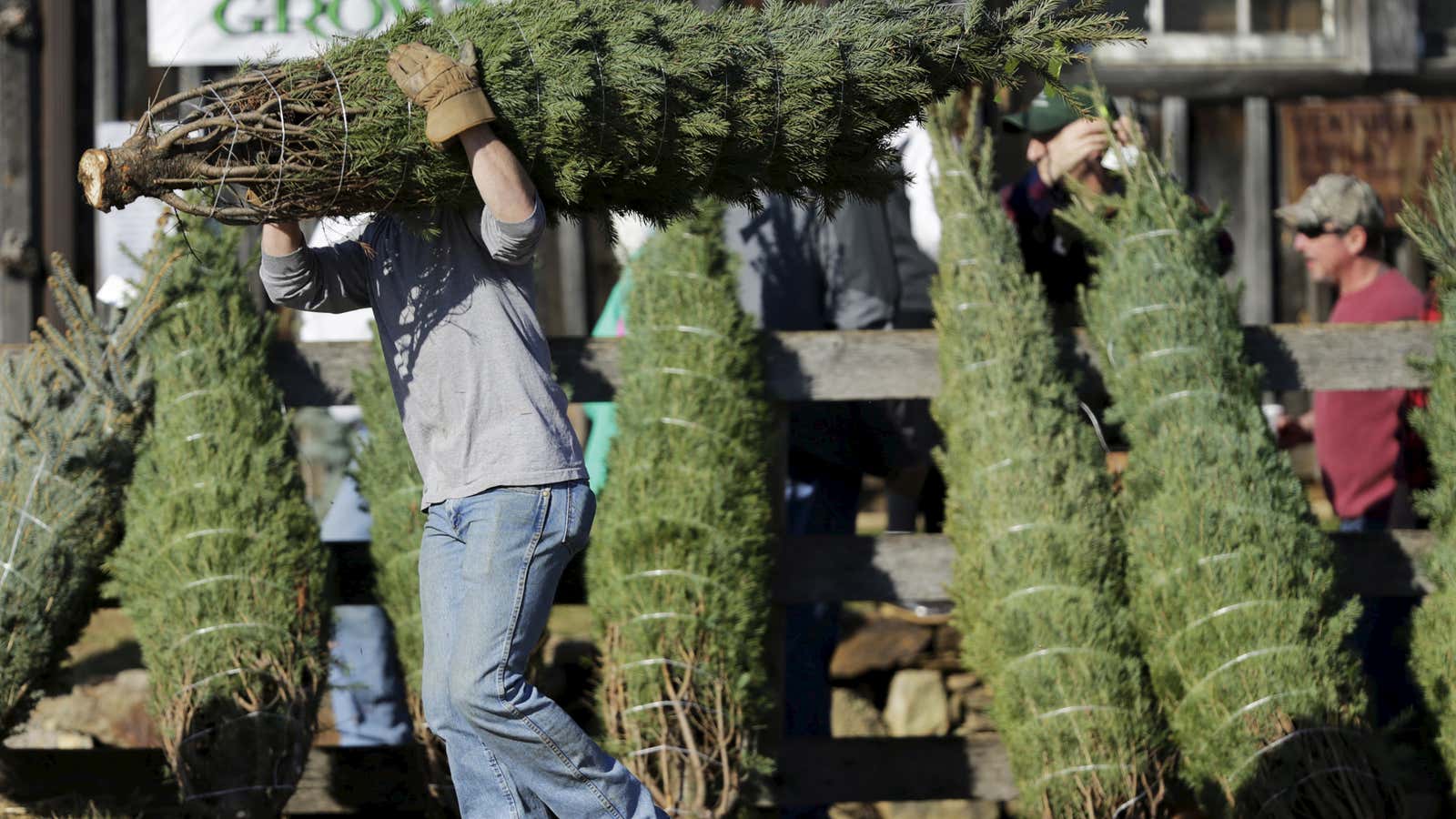The year 2008 was terrible for pretty much everyone—but for US Christmas tree growers, it was especially wretched. Right as the double-whammy of recession and financial crisis hit, a sudden glut of trees that year caused prices to nosedive. Farmers folded en masse.
Now, thanks to that bust, things are swinging in the opposite direction.
American consumer demand is as strong as ever, but there are fewer Christmas trees coming to market. And that’s driving up prices around the country. This year, tree buyers in some areas will find themselves paying as much as 10% more than in 2017, Doug Hundley, spokesman for the National Christmas Tree Association, an industry group, told CNBC.
The shortage isn’t totally new. Prices began ticking up a couple years back—which, if you do the tree life cycle math, makes sense.
It takes somewhere between eight and 10 years for a seedling to grow into the handsome six-foot fir that, in many millions of homes across America, forms the centerpiece of Christmas festivities. In the 1990s and early 2000s, the bustling US economy and cheap land and labor led to a boom in Christmas tree planting. The resulting oversupply hit in 2008 and continued to suppress prices for several more years. As one huge wholesale farm in Oregon told the Atlantic last year, 2016 was the first year in a decade that his business earned a profit. And even among the farmers who toughed it out, many couldn’t afford to plant as many trees.
Only in 2016, when the Great Recession generation of evergreens started coming of age, did the reversal of fortunes begin.
Between 2015 and 2017, the price of the average Christmas tree rose from $64 to $73, according to sales data from Square. The payment processing company expected average prices in late November—when prices tend to be at their steepest—of between $77 and $81. (If you’re in the market for Christmas trees, this nifty calculator should help you time your purchase.)
For America’s beleaguered Christmas tree farmers, higher prices are undoubtedly a relief. But there’s a potential downside. That is, it could increase the appeal of the industry’s biggest long-term threat, the plastic alternative.
“We are selling less real trees than we were 40-50 years ago despite a major increase in population,” NCTA’s Hundley told NBC News. “The artificial tree has bitten severely into this industry.”
In 2017, Americans bought about the same number of trees, 27.4 million, as they did the previous year, according to the NCTA. Fake tree purchases, however, leapt 13%, totaling 21.1 million in 2017. Expensive real trees could drive even more would-be buyers to spring for plastic trees instead—sapping future demand from the market.
